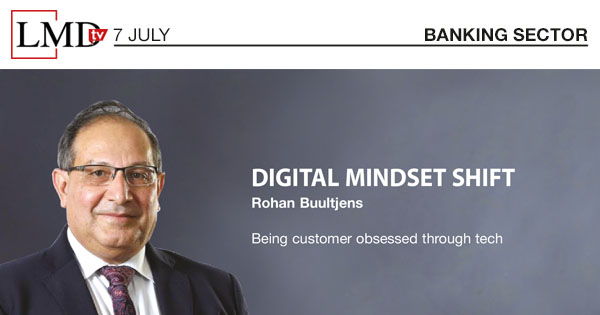LMD TV
“The competitive environment has created disruptions,” said Rohan Buultjens, continuing that “there are limited growth opportunities for banks.” Buultjens is the Chief Technology and Digital Officer of Hatton National Bank.
 He also stated that regulatory constraints, an eroding customer base, reduced operating margins for banking products and a fall in revenue have compelled banks to review their approaches.
He also stated that regulatory constraints, an eroding customer base, reduced operating margins for banking products and a fall in revenue have compelled banks to review their approaches.
Therefore, he believes that becoming customer centric or customer obsessed is the solution.
Furthermore, he asserted: “This requires new functional capabilities that drive your technological requirements,” adding that “to be customer obsessed, you need omni-channel infrastructure, the ability to interact with customers on social media and a holistic view of the customer – and then a robust digital code to support all this.”
According to him, agile front, middle and back office processes are necessary. Buultjens also emphasised that “social, mobile and cloud technologies, analytics, RPA chatbots, big data and next generation systems need to come together.”
Moving onto value propositions, he opined that “this needs to address convenience, empowerment, responsiveness and transparency,” and affirmed that these are key drivers to “increase process efficiencies and focus on which segments to drive the value proposition in.”
At the same time, Buultjens noted: “There are a lot of initiatives from the Central Bank of Sri Lanka’s standpoint to enable digital,” adding that the goal is to reduce transaction costs for the customer. He also remarked: “The Central Bank and government are enabling open banking to drive financial inclusions and innovation.”
Although this opens up opportunities for fintech and third parties to come on board, he commented that this necessitates certain regulations such as data privacy with a legal framework in place. However, he believes that the present situation obstructs this drive.
“Today, banks are challenged with nonperforming assets (NPAs) with customers for non-payments of their loans,” he remarked, adding that “if through data analytics, you could predict that ‘x person’ in the next two to three months has a good chance of falling into an NPA, it gives the bank an opportunity to be proactive and help the customer.”
He stated that data analytics make it easy to identify fraud and money laundering transactions, while they also provide customer insights for the purpose of offering new products, services and discounts.
“It’s the value proposition that defines the bank and how it wants to deliver that value proposition to the customer,” he posited, adding that “every bank has a different way of delivering.” However, he pointed out that “some banks are talking about digital but not doing much about it” while others are committed to it.
Sharing his thoughts on the threats confronting the local banking sector, Buultjens listed the following: the current economic predicament, exchange rate fluctuations between the US Dollar and Sri Lankan Rupee, the competitive environment and demanding customers.
“Banks need to unlearn what they’ve known in the past because you need new ways of doing things,” he urged.
He stressed the importance of nurturing a digital mindset where “everyone thinks digital – and are being digital – rather than only talking digital, and creating a facade by having a mere kiosk while everything else at the backend is manual.”
According to him, COVID-19 has created unprecedented changes; and therefore, customers have become extremely demanding. Buultjens stated that “he [the customer] doesn’t want to waste his time at the bank. He wants to get things done from his fingertips.”
Finally, he highlighted the value of adopting a digital shift and empowering customers to get things done by themselves while appreciating that “the ethos of the country may not enable you to eliminate banks” but that the push for digital exists as well.



